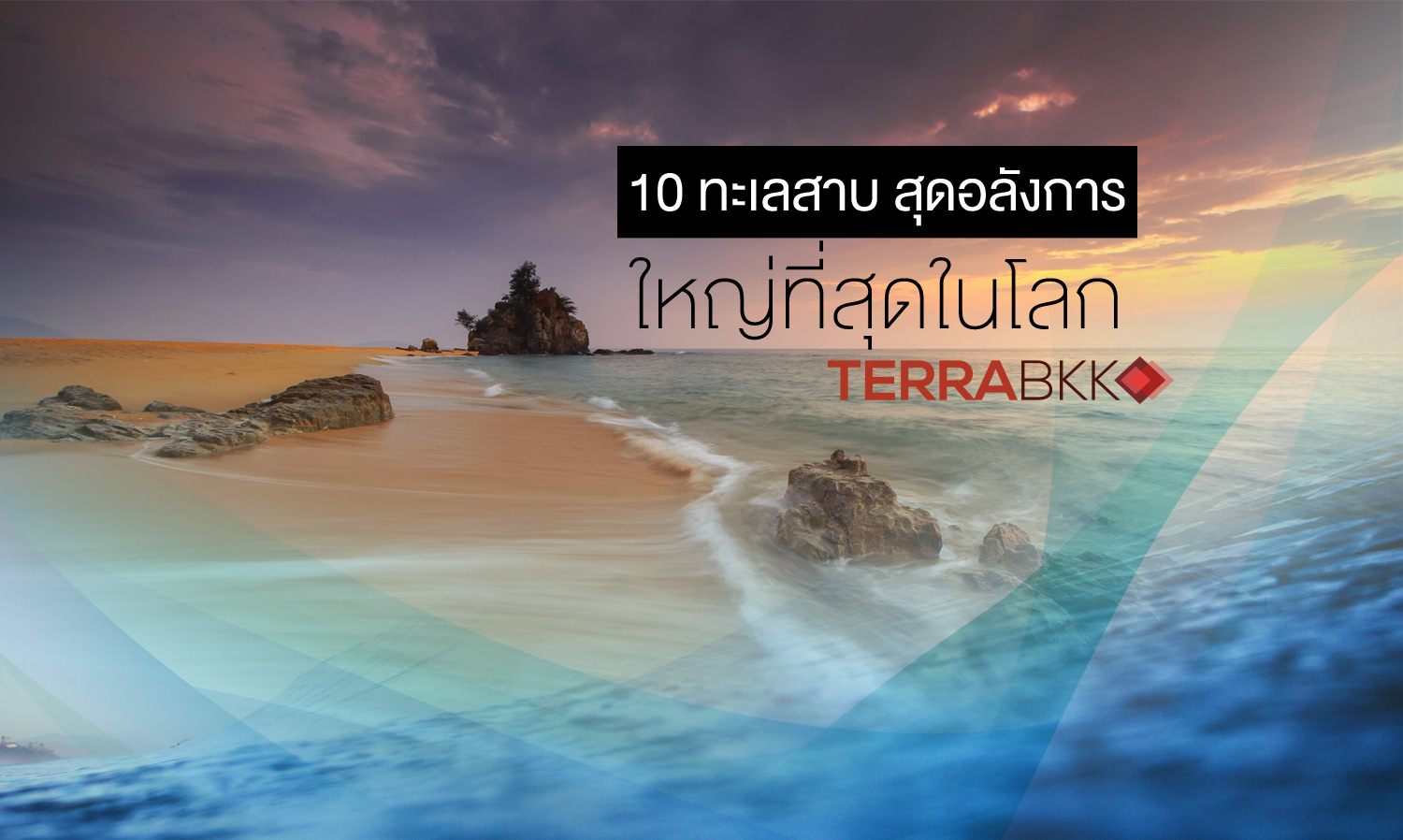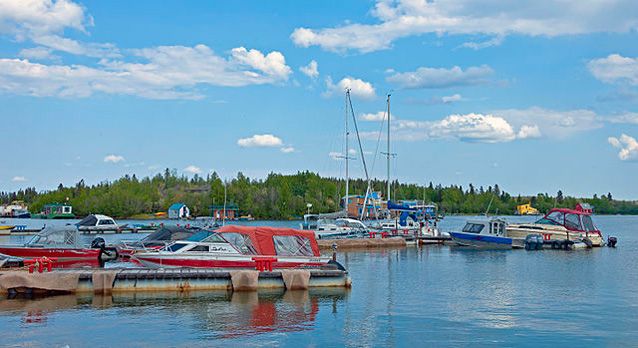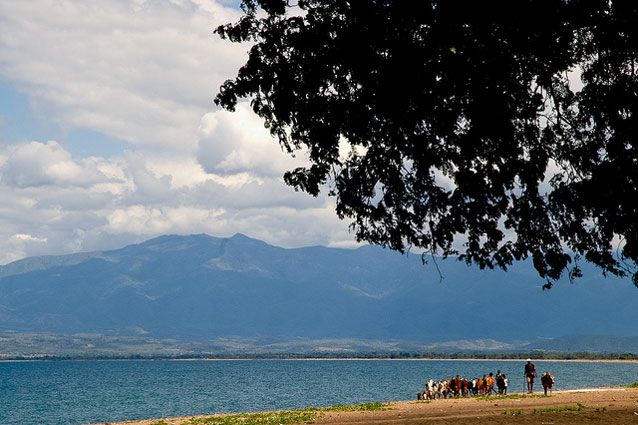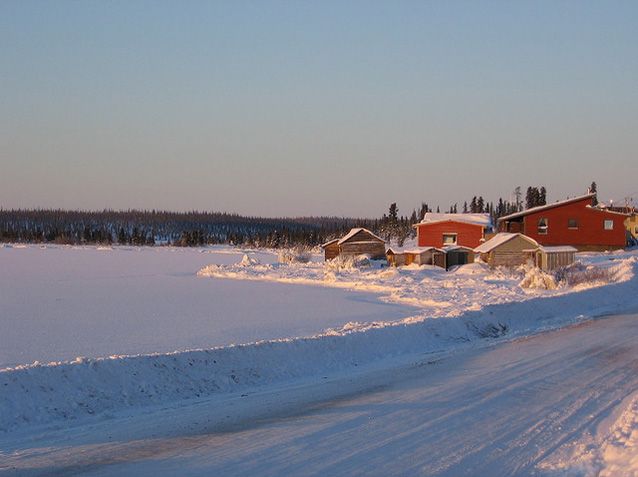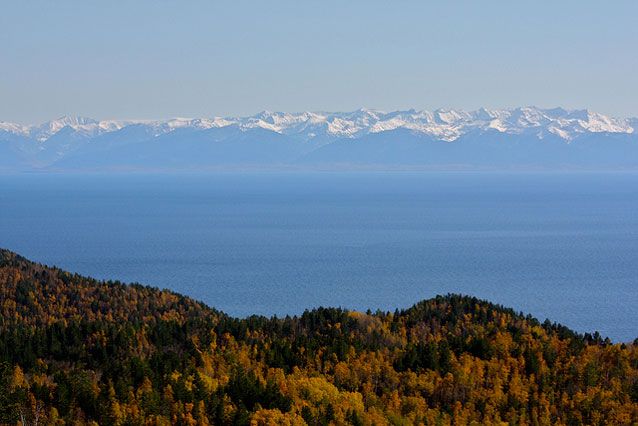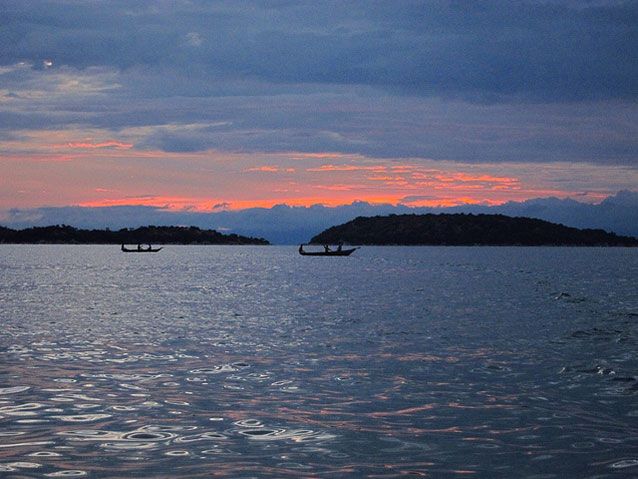10 of the largest lakes in the world
By one estimate, 117 million lakes dot the Earth, covering close to 4 percent of the land area that's not already taken up by glaciers. If you calculate the size of all those lakes — researchers counted only those with a surface area of about a half-acre and up, so that backyard pond may not have made the cut — we're talking about 2 million square miles of Earth that is considered lake water.
And the study didn't even include what many people consider the world's biggest lake, the Caspian Sea (pictured). That would add close to another quarter-million miles to the total. The Caspian Sea is big.
Here's a list of some of the biggest lakes in the world, from the bottom up. A true top 10 is hard to come by since lakes are constantly changing in size. The Aral Sea in Russia, for example, has shrunk precipitously as rivers that feed it have been diverted.
10. Great Slave LakeSituated in Canada's Northwest Territories, Great Slave is the deepest lake in North America at a little more than 2,000 feet deep. It covers somewhere around 10,000 square miles, much of it frozen over for most of the year. The capital of the Northwest Territories, the town of Yellowknife (population: around 20,000), is on the lake's north shore.
Great Slave, named for the indigenous Slavey Indians of the area, is packed with trout and whitefish, but much of the area is filled with miners, digging first for gold and now for diamonds. Great Slave Lake is also a houseboat haven, and the setting for the Animal Planet survivalist series "Ice Lake Rebels."
Photo: Daniel Case/Wikimedia Commons
9. Lake MalawiAbout 220 miles southeast of Lake Tanganyika, this lake is shared by the countries of Malawi, Mozambique and Tanzania. Among those countries, the lake is called Malawai only in Malawi. In the other two countries, and throughout other parts of Africa, it is called Lake Nyasa.
At 360 miles long and 47 miles wide, the lake covers more than 11,000 square miles. Malawi — or Nyasa, if you want to go that way — also is known as an especially rich habitat for fish. More than 1,000 members of the cichlid species live in the lake, which is also home to hippopotamus, crocodiles and monkeys.Photo: Christiane Birr/flickr
8. Great Bear LakeGreat Bear, 12,000 square miles of frigid water and ice, is the largest lake entirely within Canada. It's located in the nation's Northwest Territories, east of Alaska. The Arctic Circle runs through the northern part of the irregularly shaped lake, which has five distinct "arms." Great Bear is iced over for all but about four months of the year.
Great Bear is largely pristine, but it's had a spotty past. The Canadian government mined uranium there in the early part of the 20th century and dumped some 750,000 tons of uranium-tinged mining waste into Great Bear. Now, the area is being explored for oil reserves.Photo: mattcatpurple/Wikimedia Commons
7. Lake BaikalConsidered the world's oldest and deepest freshwater lake — at its deepest, it plunges more than a mile — Baikal contains somewhere around 20 percent of all the fresh water on the planet. More than 300 streams and rivers flow into the lake, though only one, the Angara, heads the other way. It is home to the Baikal seal, the only freshwater seal in the world.
Baikal was formed some 20-25 million years ago and sits in a rift in the continent (like Tanganyika in Africa) where, if scientists are correct, the tectonic plates will eventually split — not tomorrow, but some day — and form separate land masses.
Photo: Kyle Taylor/flickr
6. Lake TanganyikaTanganyika is considered the longest lake in the world. At its widest, it’s only 45 miles across. But it stretches some 418 miles north to south, starting in Burundi, sharing a long border with Tanzania and the Democratic Republic of Congo, and ending in Zambia. It covers almost 13,000 square miles.
The lake is freshwater, one of the largest and deepest in the world, and contains more than 2,000 plant and animal species — 600 or more that can be found only in Tanganyika. The lake was formed some 12 million years ago along the Great Rift Valley, the split between two major tectonic plates on the continent.
Photo: fabulousfabs/flickr
5. Lake MichiganMichigan ranks as the third-largest of the Great Lakes and is the only one entirely in the U.S. At 307 miles long and 118 miles across, Michigan’s surface area covers more than 22,000 square miles. It’s connected to Lake Huron through the Straits of Mackinac, so many scientists consider it one lake.
The shoreline on the northern part of the lake is largely uninhabited. But it’s packed along the southern and western shores, from Gary, Indiana, (population: about 78,000), through Chicago (2.7 million) Milwaukee (599,000) and up to Green Bay (104,000). There are several fisheries on the lake, with trout, salmon and walleye being the big catches.
Photo: Anne Swoboda/flickr
4. Lake HuronThe second-largest of the Great Lakes, Huron covers more than 23,000 square miles and is 247 miles across at its widest point. Most of the lake likes in Canada, and that part is the largest bit of water in the nation. Huron gets most of its water from the St. Mary's River, flowing in from Lake Superior, and a little run-over from Lake Michigan through the Straits of Mackinac.
Manitoulin Island is the largest freshwater island in the world, lying in the northern part of Huron in Ontario. It has more than 100 lakes of its own. Somewhere around 13,000 people live on Manitoulin year-round.
Photo: Josh Grenier/flickr
3. Lake VictoriaFed mostly by rainwater, not rivers or streams, Victoria is the second-largest freshwater lake in the world. At its longest, it’s about 250 miles from shore to shore. But it averages only about 132 feet deep, and that fluctuates depending on climate and rainfall. Victoria was once thought to be the source of Africa's great Nile River. But the Nile, like Victoria, is fed mostly by rain.
Victoria — in Kenya, Uganda and Tanzania — boasts more than 3,000 islands, many of which are inhabited. The Ssese Islands, in the northwestern part of the lake, are an archipelago of 84 islands that include resorts and at least one golf course.
Photo : Peter Wollinga/Shutterstockr
2. Lake SuperiorThe largest freshwater lake in the world is so big, it could hold all the water in the other Great Lakes — and three more Lake Eries. The surface area is roughly the size of the state of Maine. Ten percent of the world's fresh water that is not frozen is in Superior.
Henry Wadsworth Longfellow, coining a variation of an Indian name, called the lake "Gitche Gumee" (roughly "great sea" or "big water") in the "Song of Hiawatha." Canadian songwriter Gordon Lightfoot picked that up in "The Wreck of the Edmund Fitzgerald," about the loss of a freighter and its crew of 29 in a 1975 storm on the lake.
Photo : Randen Pederson/flickr
1. Caspian SeaIt's called a sea, partly because of its size and its salt water. But geographically, because it's not connected to an ocean or sea and because it sits below sea level, the Caspian is considered a lake by most. It spans 152,000 square miles, nearly five times the size of Lake Superior, No. 2 on the list of largest lakes in the world. Five countries — Azerbaijan, Iran, Kazakhstan, Russia and Turkmenistan — surround the Caspian.
On the border between Europe and Asia, the Caspian is "endorheic" — there is no outflow from the lake. The Volga River, the longest river in Europe, supplies most of the Caspian Sea. In all, the Caspian contains somewhere around 40 percent of all the lake water in the world.
Photo : Marina Khlybova/Shutterstock
ขอบคุณข้อมูล จาก : www.mnn.com